History and traditions Fishing has been carried out in Finland as long as there have been people here – about 10,000 years. Fishing and feasting on the gifts of the waters form an important part of the Finnish way of life. Recreational anglers bring their catches home to prepare delicious meals. Photo: Jari Salonen 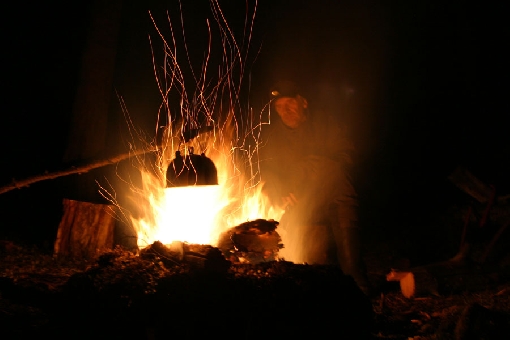 Sitting by the fire in deep meditation forms an essential part of a fishing trip. Finland's thousands of lakes were created in the aftermath of the Ice Age, as glacier and rain waters filled the deeps carved out on the crust of the earth by the 2–3 kilometres deep glacier mass. The catches yielded by the extensive fishing waters played an essential role enabling settlement in Finland and survival in the harsh conditions following the Ice Age. The fruit of the waters has formed a significant part of nutrition up until modern times. Consequently, Finns have developed a wide variety of methods of catching key game species from different waters and fishing grounds in different seasons. Photo: Kimmo Pöri 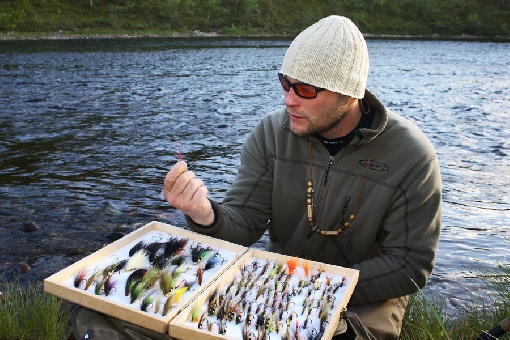 You can find a suitable fly for the Utsjoki area in this fly box. Fishing culture is thriving Fishing and fishing waters form an important part of the Finnish identity. Moving around on the water, enjoying our nature, is a way of life for many people. The historical significance of water bodies and fishing can also be seen in many Finnish place names. Urho Kekkonen, Finland's longest standing President, was known as being a keen angler. One of the most well-known Christmas traditions is the Christmas pike presented to the President of the Republic by coastal fishermen. Fishing and fish are also present in literature and the arts. To improve their fisherman's luck, Finns have also cast fishing spells. The most well-known spell reads as follows: ‘Anna Antti ahvenia, Pekka pieniä kaloja!' This may be loosely translated as follows: ‘Let St. Andrew provide me perch, let St. Peter supply small fry!' Amidst the abundance of fishing grounds, it's no wonder that fishing is one of the most popular leisure interests for Finns. Almost 40% of the population, equating to about 2 million Finns, go fishing at least once per year. Active recreational anglers can be counted in hundreds of thousands and for many fishing is the number one pastime. International fishing tourism has existed for around 200 years in Finland. British fly-fishing enthusiasts discovered the salmon spots of River Teno in the early 19th century at around the same time as the Russian aristocracy found the majestic Vuoksi Rapids with its brown trout. Fly-fishing spread to the country with the Britons and Finnish anglers have subsequently developed countless fly models suitable for Finnish waters and fish species. Photo: Risto Jussila 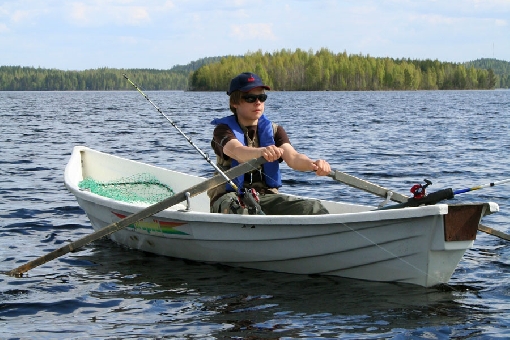 Trolling on a rowing boat is one of the most traditional forms of fishing. Ancient catching methods, modern tackle Many current fishing methods date back thousands of years. The world's oldest fishing net, discovered in the Korpilahti area in Antrea, located in what is nowadays Russian Karelia, goes to show that the hunter-fishers who resided in Finland after the Ice Age mastered advanced catching techniques. During the Middle Ages, weirs built across major salmon rivers were the largest and most advanced form of fishing tackle. Setting them up and using them called for close collaboration within the fishing community. The last glimpses of weir fishing can still be seen on River Teno. Lure-fishing is a prehistoric form of fishing, which developed into modern sports fishing. Lures may have been used in Finland as early as in the Stone Age. More reliable evidence can be found from the Finnish Iron Age at the turn of the first millennium BC, as the copper lures discovered in Rautalampi and Tampere date back to this period. Since the winter fishing season is long, it is also an important fishing period in Finland. Anglers use a number of tricks to catch fish through the ice cover. Ice-fishing, which involves fishing through a hole bored through the ice, is an ancient technique that is still one of the most popular fishing methods. However, a modern angler's lightweight tackle differs considerably from the robust tackle used by his stone-age counterparts. Photo: Jari Salonen 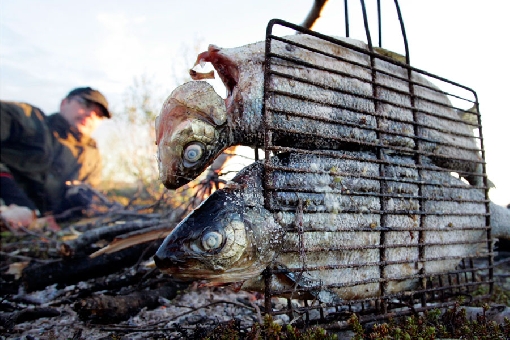 The catch tastes best when prepared by the side of the fishing waters. Catches polished off with relish Finnish recreational fishing is a diverse sport. ‘Local food from nets dipped in pristine waters,' is the leading idea for many Finnish recreational anglers, unlike elsewhere in Europe, where nets are almost exclusively used by professional fishermen. Over the last few decades, fishing with standing tackle has declined, while it is more and more common to pursue fish with rod tackle. The ‘catch and release' method is gaining in popularity among the younger generation. Finnish anglers are obstinate and know a lot about fishing. They are quick to challenge both other anglers' methods and opinions and the ‘book learning' of the authorities and researchers. However, they are also quick to adopt new ideas – especially if their neighbours start to catch bigger fish. If presented with watertight arguments, they may even consider giving up their own deep-rooted opinions. Photo: Jari Tuiskunen 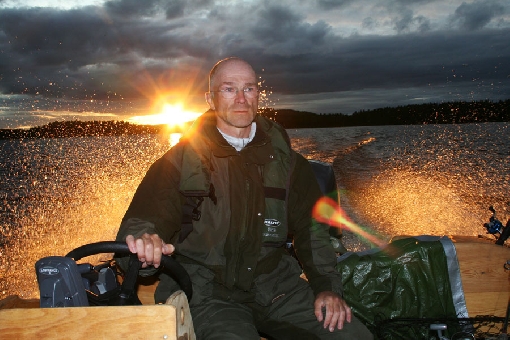 Moving around on the water is a way of life for many Finns. |